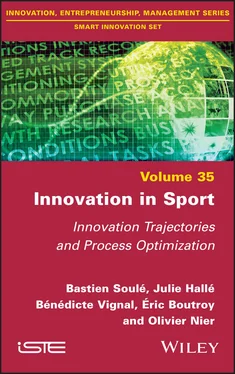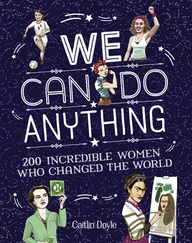A comparison between the manufacture of ultra-light mountaineering equipment (backpack or harness, see (Soulé and Lefèvre 2015)) and that of a new adjustable kayak seat within two different very small businesses (VSBs) shows varying levels of success. Yet failure or success can be explained symmetrically according to similar principles: growing interest and attachment (or not) of multiple allies, strength or fragility of ties (likely to produce continuous reconfigurations of the network), and ability (or not) to compromise – especially on technical perfectionism (Soulé et al . 2014). If, in all cases, contingency and unpredictability are prevalent, the question of the capacity of the innovation’s project owners to compromise on their initial project or program appears essential. It is in particular with regard to this aspect that it is possible to understand the contrasting fates of innovations carried by a pole manufacturing company, whose different ages testify to very different abilities to compromise (technical, commercial, entrepreneurial) in order to achieve a successful operation (Hallé et al . 2016; Vignal et al . 2018).
The socio-technical approach nevertheless sometimes struggles to shed light on what, from a normative point of view, makes possible (favors, hinders, weakens, etc.) the associations between actors in innovation. Quéré (1989) was quick to point out this limit on the clearance of regulations (collective norms, interpersonal relations) and regularities (structure). However, innovation activities can be considered as dependent on and determined by different kinds of social characteristics.
For example, in line with the sociology of networks developed by the new economic sociology (Cochoy and Grossetti 2008), it is possible to take better account of the dynamics of pairing between actors. Grossetti (2006) suggests strengthening “the explicitness of what makes up the network, the relationships”, including in innovative activities (innovation networks, business creation) (Grossetti 2008a, 2008b; Grossetti and Barthe 2008). The first phases of innovation are thus characterized by a strong dependence on prior interpersonal relationships (we speak of social embedding). However, the expansion of the network will inevitably (and sometimes abruptly) involve enrolling new actors by escaping from personal relationships, sometimes by detaching oneself from one’s “close friends” (known as decoupling). This allows us to understand the difficulties in making a success of switching between the exploration and exploitation of an innovation, or the importance of the many mediation mechanisms (objects and professionals involved in putting people in touch with each other) that proliferate around innovation activities: clusters, incubators, economic agencies, directories, etc. This interpretive framework thus is drawn upon to understand the role and changing weight of interpersonal relationships in an innovation trajectory of a novel sliding device (Hallé and Boutroy 2017).
KEY POINTS – At first sight difficult to access, particularly due to its innovative and radical character, the socio-technical analysis of innovations has the merit of “hammering the nail in” by breaking down most of the commonplaces that are frequently trotted out about innovation. It invites us to study failures as well as successes; to avoid focusing on the inventor and to substitute a collective or even systemic interpretation; and to avoid isolating the social and technical dimensions of the processes being studied. Indeed, innovation implies dealing with complex material elements (technologies, practice spaces, materials, objects, production systems, etc.) that will have a determining influence on the future of an invention. Three principles of symmetry summarize the foundations of this approach: “equal attention paid to successes and failures, to humans and non-humans, but also to associations and dissociations” (Goulet and Vinck 2012, p. 219). This reticular interpretive framework allowing detailed and realistic accounts of innovation dynamics will constitute the central approach mobilized in this handbook. Innovation – whether it starts in an R&D office or in a lead user’s garage – is never a solitary process. From the invention phase onwards, it is important to surround oneself with support and resources in order to make an idea or a prototype exist, evolve and become more reliable. An innovation trajectory is a collective journey involving human and non-human actors, because to succeed, the invention must be socialized and appropriated by increasingly large and heterogeneous groups.
THE LIMITS OF THESE APPROACHES – By enriching, almost infinitely, the parameters and entities to be taken into consideration, this model undeniably makes the analysis more complex. It provides a valuable “education of the eye” that helps us to avoid many simplifying traps, but at the same time requires adjustments. Without questioning the status of material elements as “acting entities”, there are obviously differentiated properties between the domain of humans and non-humans, which this theory tends, if applied unqualifiedly, to level out excessively (Quéré 2015). Moreover, because of its anchoring in actor-network theory (Akrich et al . 2006), socio-technical analysis proposes a theory of action (what moves actors) that risks being reduced to strategic rationality; it is indeed largely about tactics, enrolments, interest, etc. (Quéré 1989). The danger is then that we cut ourselves off from certain contributions of the classical social sciences, which are nonetheless capable of taking into account the external determinants that precede innovation activities. By giving them their rightful place, it is possible to better understand how actors link or associate (types of social relations, structures), or – by mobilizing the achievements of more traditional sociologies (lifestyle, dispositions, cultures, etc.) – the phenomena of attraction or resistance to a particular enlistment or innovation (Gaglio 2012).
In this respect, the recent revivals of economic sociology around attachments (Cochoy 2012a) and market arrangements (Callon et al . 2013) provide promising support for understanding the establishment of links in innovation processes. Above all, it is important to remember “that these positions and programs complement and enrich each other more than they contradict each other” (Cochoy 2012b, p. 37).
1.4. Critical innovation studies
In recent years, a still heterogeneous set of approaches originating essentially from sociology has renewed the call for caution for anyone intending to develop research on innovation. The collective study coordinated by Godin and Vinck (2017) offers a synthesis of this research: a statement of the various biases faced by researchers who primarily study innovation; a call for enhanced reflexivity; and a desire to identify innovation processes in a comprehensive manner. These critical analyses aim to avoid the reinforcement of a particularly prevalent “ready-made thinking”, whose concrete repercussions go beyond the academic sphere (Sveiby 2017). It is in fact a call for a less enthusiastic, more balanced and nuanced approach. We propose below a synthesis of these approaches, in the form of advice and calls for vigilance, which for the most part echo aspects developed earlier.
Several biases orient the study of innovation in a sometimes very marked direction. In some ways, they also shape managerial practices and political decisions in favor of innovation. The purpose of this section is to identify the factors that prevent us, in a certain way, from considering and analyzing innovation “as it is done”, in as realistic a manner as possible.
These biases are problematic insofar as they contribute to forming excessive confidence in the benefits of innovation, to exaggerating the control exercised over processes and to trivializing disruptive innovations, while strongly orienting towards techno-push proposals. All this is to the detriment of understanding complex, contingent and risky processes that require anticipation and preparation. Derived from or associated with a certain number of myths, they are at the origin of innovation models (Joly 2019). These interpretive frameworks generate shared representations and interpretations of how innovation is produced, then acting performatively, they guide our collective way of seeing innovation. Jasanoff and Kim (2015) speak of socio-technical imaginaries, imbued with values that impact both discourse and practice, more or less consciously.
Читать дальше












